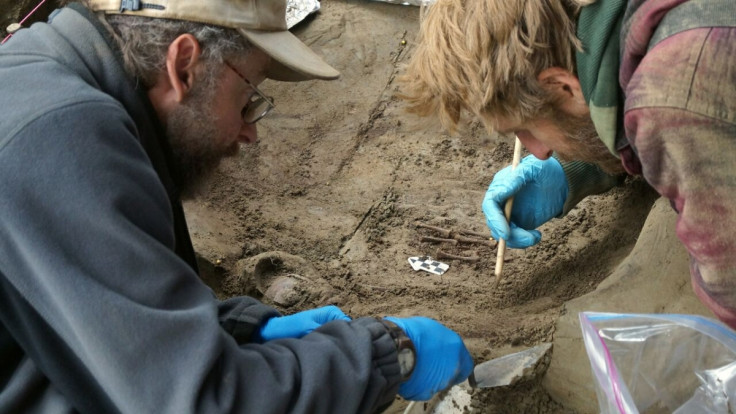Entire genetic blueprint of two 11,500-year-old infants solves mystery of first Native Americans

A double infant burial site in Alaska has shed light on the first Native Americans to arrive on the continent from Siberia over an ancient land bridge called Beringia. Scientists were able to obtain the entire genetic blueprint of the two infants to establish that they were not related nor were they from the same lineages of Native Americans.
The researchers, from the University of Utah, published their finding in the journal PNAS. They said the model suggests the colonisation of the Americas was preceded by a long period of isolation and differentiation into distinct genetic populations. Both infants coming from different lineages suggests that after arriving in Alaska from Asia, populations spent around 10,000 years there before expanding outwards into the rest of the continent – a theory called the Beringian standstill model.
Dennis O'Rourke, senior author of the paper, said: "These infants are the earliest human remains in northern North America, and they carry distinctly Native American lineages. We see diversity that is not present in modern Native American populations of the north and we see it at a fairly early date. This is evidence there was substantial genetic variation in the Beringian population before any of them moved south.
"It supports the Beringian standstill theory in that if they [the infants] represent a population that descended from the earlier Beringian population, it helps confirm the extent of genetic diversity in that source population. You don't see any of these lineages that are distinctly Native American in Asia, even Siberia, so there had to be a period of isolation for these distinctive Native American lineages to have evolved away from their Asian ancestors. We believe that was in Beringia."
The two infants were found near the hearth of a residential structure in 2013. One was a newborn that died in birth while the other died at between six and eight weeks. Archaeologists and researchers that found the burial site asked O'Rourke to analyse the two infants' mitochondrial DNA – genetic information inherited from mothers.
From the remains, scientists were able to obtain the full mitochondrial genome sequence for both infants. Findings showed one came from the C1b lineage and the other from the B2 lineage – both of which are rare among contemporary populations in the region. This suggests mitochondrial diversity in these early populations was more diverse than it is now.
The team also says the genetic findings shed further light on the populations at the time. O'Rourke said: "It's not common to find infants buried together that are not related maternally. It raises questions about the social structure and mortuary practices of these early people." He added it could be that the infants had the same father, for example.
The authors concluded: "The fact that the infants are contemporaneous in time and buried together in a single act speaks to population diversity in ways that single sample reports cannot ... The dual burial of maternally unrelated infants (although perhaps paternally related), suggests additional hypotheses regarding mortuary practices and social and ceremonial behaviours present at this early time; this line of investigation may be addressed in the future by both nuclear genomic analyses of the infants, as well as continued elaboration of the archaeological context of the site."
© Copyright IBTimes 2025. All rights reserved.






















